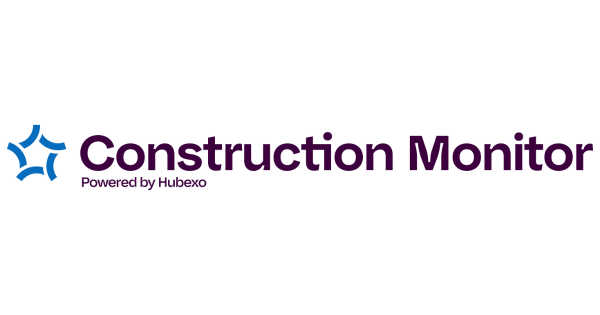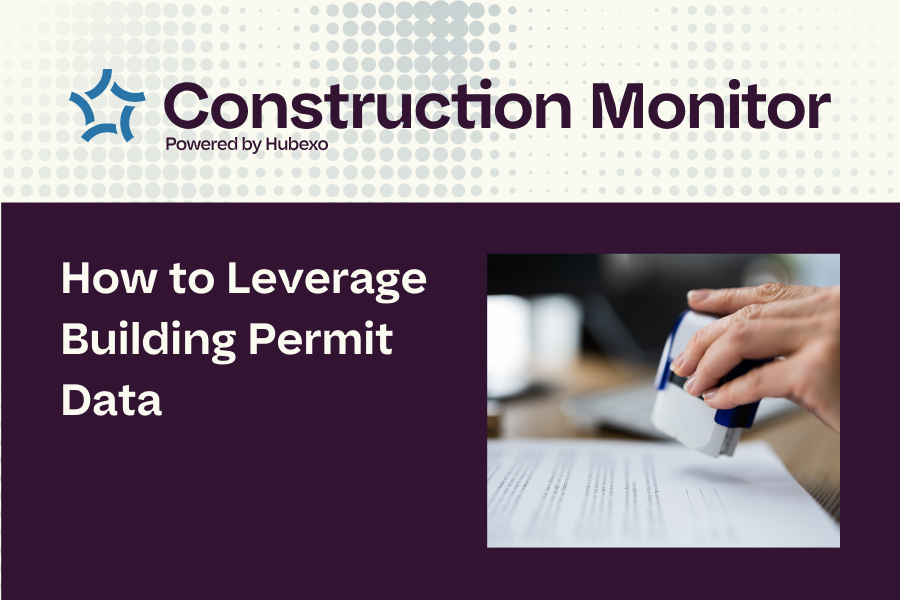Types of Construction Professionals Who Use Permit Data to Find Work

Building Permits for Suppliers
Suppliers of materials such as concrete, lumber, HVAC systems, and plumbing supplies rely on building permit data to anticipate demand. For instance, knowing when a large commercial project is kicking off helps suppliers coordinate inventory and shipments, avoiding delays.
Related: What Are Construction Aggregates?
Use Case: Building Permits for Suppliers
Having data on which builders and general contractors are pulling permits, as well as their contact info, is the ultimate lead source for suppliers. Whether residential builders are pulling pool permits or commercial builders are getting solar permits, it’s crucial for suppliers to have accurate, up-to-date data on the permits builders and GCs pull along with their contact info for a steady supply of leads. Construction Monitor has data on the permits builders and GCs pull across the country, with their contact info, updated weekly.
Stage of Construction: Suppliers
Suppliers often come into play during the mid to later stages of construction. Once the foundation and framing are complete, materials for interiors and mechanical systems are delivered. This phase is not as labor-intensive as it is logistics-heavy, as suppliers need to manage inventory flow efficiently.
Related: Contractors and Suppliers: Tips for Maintaining this Crucial Relationship.
Building Permits for Subcontractors
Subcontractors, such as electricians, plumbers, and carpenters, often receive their leads through building permit data. Once a project is permitted, subcontractors can pitch their services to the GC or builder. Knowing when and where projects are happening is crucial to keeping their teams employed and schedules full.
Related: Construction Business Success: Be a Shark.
Use Case: Electrical Subcontractors and Solar Permits
Electrical subcontractors, for example, may use solar permit data to target leads in residential developments where builders or GCs are installing solar panels. This data helps them connect with GCs or builders who may need electrical work for renewable energy systems, ensuring plenty of leads. Without permit data, subcontractors would never know which builders or GCs are pulling permits or if permits are being pulled at all.
Stage of Construction: Subcontractors
Subcontractors generally enter the project once the structure is in place. Electrical and plumbing work, for instance, typically happens once framing is complete. Their tasks are labor-intensive, requiring specialized skills but less equipment compared to the earlier stages of construction.
Building Permits for Builders
Builders, whether focusing on residential, commercial, or mixed-use projects, rely heavily on building permit data to stay ahead of the market. Permit data offers builders the ability to track competitors to see what and where they’re building. Builders use the weekly permit data provided by Construction Monitor to track their market share versus competitors. Plus, builders use permit data as a statistical and analytics tool to understand the current trends and future demands for building projects in large areas.
Related: Using Construction Data as Home Builder.
Use Case: Residential Home Builders and Solar Projects
Consider residential home builders who often use building permit data to understand housing demand trends and competitor activity. According to Grand View Research, solar installation is growing: “The U.S. residential solar PV market size was estimated at USD 7.45 billion in 2023 and is expected to grow at a compound annual growth rate (CAGR) of 14.4% from 2024 to 2030.” More residential solar projects means more competition between builders, making it crucial for you to have data on the permits your competitors are pulling.
Stage of Construction: Builders
Building permits are often obtained in the early design stages, marking the transition from planning to execution. Builders get involved once the permits are issued, coordinating the groundwork and foundation before moving to more specialized tasks. The work is equipment- and material-heavy, especially during foundation and structural framing, with a balance between labor-intensive and equipment-driven tasks depending on project complexity.
Building Permits for GCs

General contractors (GCs) use building permit data for competitive analysis. GCs can see which of their competitors have pulled permits in their territory. General contractors can also see which exact permits their competitors are pulling. Having up-to-date permit data is paramount for GCs to understand what they’re competition is building.
Use Case: Pool Permits for GCs
In residential pool construction, a GC uses pool permits to identify new projects in the area. They also use this data to see which competitors are pulling what permits in their area. Pool permit data gives GCs insights to the overall demand for pools in residential areas as well as which of their competitors are pulling the same permits.
Stage of Construction: GCs
GCs are involved at every stage, from pre-construction planning (post-permit approval) to completion. Their work varies depending on the project, but it is both labor- and equipment-intensive as they oversee multiple teams and ensure that each phase progresses smoothly.
Related: Improving Communication Between GCs and Subcontractors.
Leveraging Construction Permit Data for Strategic Analysis and Prediction
Construction permit data offers a wealth of information that developers, contractors, and suppliers can use to drive strategic decisions and predictive analytics. By analyzing permit trends, companies can gain insights into future market activity, anticipate potential risks, and position themselves for growth in competitive landscapes. Leveraging this data effectively allows for more accurate forecasting, resource planning, and decision-making across various facets of the construction industry. Below, we explore specific ways that construction permit data can be used to enhance prediction, strategy, and other business purposes.
Using Permit Data to Predict Market Trends in Construction
Analyzing permit data over time can reveal patterns in construction activity, such as rising demand in certain regions or specific project types. By recognizing these trends early, you can anticipate market shifts, enabling them to adjust your business strategies accordingly. This might involve investing in emerging markets or reallocating resources to areas experiencing growth.
How Strategic Analysis of Permit Data Can Drive Business Decisions
Strategic analysis of construction permit data provides valuable insights that can guide business decisions. For example, identifying regions with high permitting activity might signal opportunities for new market entry or increased sales efforts for suppliers and service providers. Similarly, monitoring the types of permits issued can indicate shifts in market demand, helping construction companies align their product or service offerings with current trends.
Identifying High-Growth Areas Through Construction Permit Analysis
Construction permit data can be used to identify geographic areas experiencing rapid growth. By mapping out where permits are being issued, developers and contractors can pinpoint high-demand locations and adjust their business development efforts to capitalize on these opportunities. This approach enables builders to strategically expand into new markets with data-driven confidence.
Leveraging Permit Data for Competitive Analysis and Market Positioning
Permit data not only reveals market trends but also provides insights into competitor activity. By analyzing competitors’ permitting patterns, you can gain a better understanding of their strategies and project pipelines. This knowledge can inform decisions around the building market in an area, giving you insights to drive growth.
Using Building Permit Data for Successful Lead Generation in the Construction Business

Every business, particularly construction firms, requires a steady influx of new customers to sustain revenue flow and profitability. Lead generation in the construction business flows from a number of consistent categories, but adding building permit data to these sources will significantly expand your reach into areas you may not have even considered.
If you’re looking for a reliable source of building permit data, check out Construction Monitor. Construction Monitor is an industry leader in providing comprehensive, up-to-date information. Our platform is designed to help builders, contractors, suppliers, and other construction professionals access the permit data they need to find new opportunities, streamline operations, and grow their business. Here’s how Construction Monitor can support your needs:
1. Access Comprehensive Building Permit Data
Construction Monitor collects building permits from thousands of municipalities across the U.S., giving you a detailed look at residential, commercial, and industrial projects in your area. Whether you need information on new builds, remodels, additions, or specialty projects like solar installations, our platform consolidates everything into one easy-to-use database. With data updated weekly, you’ll always have access to the latest project leads and trends.
2. Powerful Search and Filtering Tools
Finding the right projects for your business is simple with Construction Monitor’s advanced search tools. You can filter permits by location, project type, valuation, and stage of construction, allowing you to zero in on the most relevant opportunities. Need to target a specific market? Use our geographic filters to view projects by state, county, or city, and tailor your outreach to areas with high activity.
3. Customizable Alerts and Notifications
Stay on top of new opportunities with customizable alerts and notifications. You can set up alerts for specific project types, contractors, or locations, and be notified as soon as new permits matching your criteria are added. This ensures that you never miss a potential lead and can act quickly to secure work before your competitors.
4. Visual Mapping and Data Insights
Our platform offers visual mapping tools to help you see where construction is booming and where new projects are starting. You can use these tools to identify emerging trends, track industry hot spots, and strategically position your business in high-growth areas. With Construction Monitor, you’re not just getting permit data—you’re getting actionable insights to drive your business decisions.
5. Build Stronger Connections with Decision-Makers
Construction Monitor provides detailed information on key project contacts, including project owners, builders, and contractors. You can access names, phone numbers, and addresses to build your contact list and reach out directly to the decision-makers who matter most. By having this information at your fingertips, you can introduce your services at the right time and strengthen your relationships within the industry.
Complete the form below to get a free sample of our data.
With Construction Monitor, you get more than just permit data—you get a strategic advantage. Our platform equips you with the tools and insights you need to identify new projects, plan your resources, and make informed decisions that keep your business growing.
Summary
Building permit data is essential for every professional in the construction industry, serving as an early indicator of upcoming projects and enabling strategic planning. Builders use it to secure jobs and prepare resources, suppliers align their inventories and shipments with project timelines, general contractors manage schedules and labor, and subcontractors target new opportunities. By leveraging building, solar, and pool permits, these professionals stay informed about construction trends and opportunities, allowing them to remain competitive in an industry where timing and preparation are key.
Visit our website to learn more about Construction Monitor and how we can get you the right building permit data.
Check out our blog page for similar posts.
Complete the form below to get a free sample of our data.

